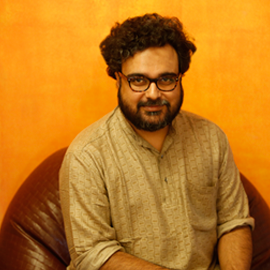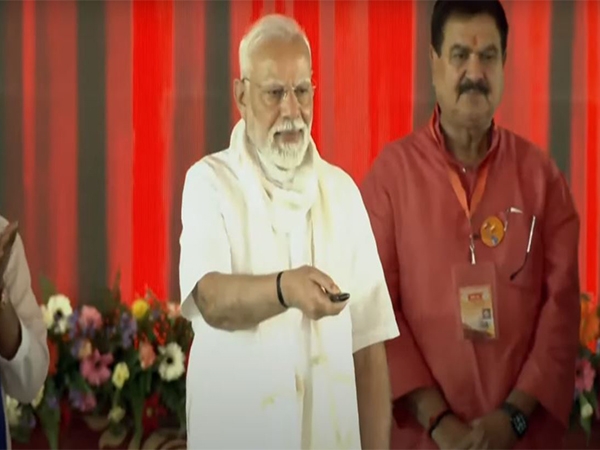World Theatre Day: As long as there is struggle, the show will go on

The occasion
- World Theatre Day is observed every year on 27 March
- With the technological advancements over the past century, theatre is struggling for survival
The resurrection
- With the advent of mass media like radio, cinema and TV, theatre had lost its place in the public imagination
- But with the increase in social inequality, it reinvented itself as the voice of the voiceless
More in the story
- The key people and bodies which revived theatre in India
- Why theatre will remain relevant as long as there is human struggle
The history of theatre is as old as communication itself in human civilisation. While the histrionic art was institutionalised at a much later stage, its roots can be traced back to the time when the first message was conveyed between individuals through gestures.
The Indian civilisation has a rich legacy of theatre. It is the land of the Natya Shastra, one of the oldest treatises on the performing arts, written by the sage Bharata during the period between 200 BCE and 200 CE.
From the epic plays of Kalidasa to the modern day, the centuries-old tradition of Indian theatre cannot be summarised in one article. However, it would be pertinent to discuss contemporary Indian drama in the light of today's social milieu.
Also read: World Theatre Day: Mohammed Zeeshan Ayyub says comedy is not the only form of entertainment
Struggling to keep up with the times
Technological advancements in the past century have posed new challenges for this art form. Its battle for survival resonates with several other struggles on social and cultural fronts.
There was a time when drama gave expression to mainstream culture. Today, it is fighting to preserve itself amidst new inventions and redefined limitations.
Therefore, the current struggle of theatre is symptomatic of contemporary social and cultural ironies in many ways. The dramatics and the deprived masses of our age share the same agony. Both lie at the same crossroads. They speak and agitate against the same forces.
Losing sheen post-independence
The Indian People's Theatre Association (IPTA) was already in the fifth year of existence at the time of India's independence. Dramatics was thriving at Rabindranath Tagore's Shantiniketan.
There were several centres of theatrical excellence around the country. Numerous theatre groups and traditional performing artists were an integral part of the society. Folk drama forms like Raas, Nautanki and Ramleela etc. were still popular. Writers used drama as a tool to highlight social issues and awaken the masses.
Also read: How IPTA, Safdar Hashmi introduced social change to Indian theatre
Radio and cinema had already caught the public imagination by the time the British left India. However, they were still available only to the affluent sections of society.
Things soon changed as the country began its journey on the path of progress. The radio was no more a matter of luxury, as it reached every nook and corner of rural India.
By the time the British left India, radio and cinema had replaced theatre in the public imagination
With the coming of the television in the decade of the 1960s, stagecraft entered into the drawing rooms of common Indian. Earlier, people had to reach out to see acting; now, acting was reaching out to them.TV ensured that people no longer needed to gather at one place to watch drama. This was the beginning of the downfall of theatre.
Return as the voice of the voiceless
Gradually, theatre groups found it harder and harder to survive. The hands that once held musical instruments to embellish theatrical performances had to pick up the tools of hard labour. Those who controlled the curtain at the theatre were reduced to apprentices in factories. Actors, too, became part of an industrial force that turned the wheel of development.
However, the fruits of this development were not for all to share. While the roads in cities like Delhi glittered, the India of the villages was still engulfed in darkness. Basic amenities remained out of bounds for a majority of Indians, as did Constitutional and human rights. But it was in these places, among these people, untouched by market consumerism, that theatre could remain alive.
Also read: World Theatre Day: Vrajesh Hirjee says watching plays expensive, but so are movies
That's when theatre evolved into a medium of expression for the miseries of the have-nots. Those involved in people's struggles understood full well that centralised media of mass communication - newspapers, cinema, TV and radio, couldn't fulfill this role, since they were controlled by the rich and powerful and failed to raise the concerns of the common people.
Inequality led to mass movements, which needed a means of expression. That's when theatre stepped in
Groups like IPTA, Kabir Kala Manch, Habib Tanvir's Naya Theatre and Safdar Hashmi's Jan Natya Manch turned dramatics into an instrument of the fight against social injustice. This was a new and decentralised stream of theatre. It did not require huge investments like cinema and TV.
Dramatists like Tanvir developed a form of theatre that required minimum resources. Their plays could be enacted even on the streets by a few volunteers. This new-age theatre emerged as the symbol of social change from the busy alleys of mega cities to the chaupals of far-flung villages.
One can find glimpses of theatre in any popular agitation of our times. Kurta-clad volunteers can disseminate messages on the beat of their tambourine the way few other media would dare to convey.
Contemporary theatre has the power to communicate in popular expressions. It often tells stories that the ruling elite would never want you to listen to. Wherever there is a mass struggle, you will find theatre standing in solidarity.
The show will go on
It is true that the ambit of theatre extends far beyond mass movements. Many institutes like the National School of Drama teach this skill in a structured manner. The number of government and private institutions teaching dramatics has rapidly increased in the past few decades. New theatre groups are mushrooming in small and big cities. New experiments are consistently reshaping the art of drama.
Also read: World Theatre Day: Paresh Rawal to Deepak Dobriyal: 10 Bollywood actors with a theatre background
The theatre that identifies itself with the people's cause is bereft of money. But, it is meant to be like that. It is not bothered about the limited scope of popularity. It may not reach far, but the primary motive of this theatre is to traverse deep into people's hearts.
IPTA, Kabir Kala Manch, Habib Tanvir & Safdar Hashmi turned drama into an instrument of the struggle
It has to take the message of awakening to the mofussils and slums. It has to remain at a distance from the power corridors, so that its language of struggle is not vitiated.
Theatre is a medium of expression. As long as there is exploitation and the spirit to rise against it, theatre will remain alive.
Edited by Shreyas Sharma
More in Catch:
Remembering Alkazi: A man of theatre, contemporary arts & many lives
There's more to theatre and it's time we realise this
First published: 26 March 2016, 8:15 IST






![BJP's Kapil Mishra recreates Shankar Mahadevan’s ‘Breathless’ song to highlight Delhi pollution [WATCH] BJP's Kapil Mishra recreates Shankar Mahadevan’s ‘Breathless’ song to highlight Delhi pollution [WATCH]](https://images.catchnews.com/upload/2022/11/03/kapil-mishra_240884_300x172.png)

![Anupam Kher shares pictures of his toned body on 67th birthday [MUST SEE] Anupam Kher shares pictures of his toned body on 67th birthday [MUST SEE]](https://images.catchnews.com/upload/2022/03/07/Anupam_kher_231145_300x172.jpg)






